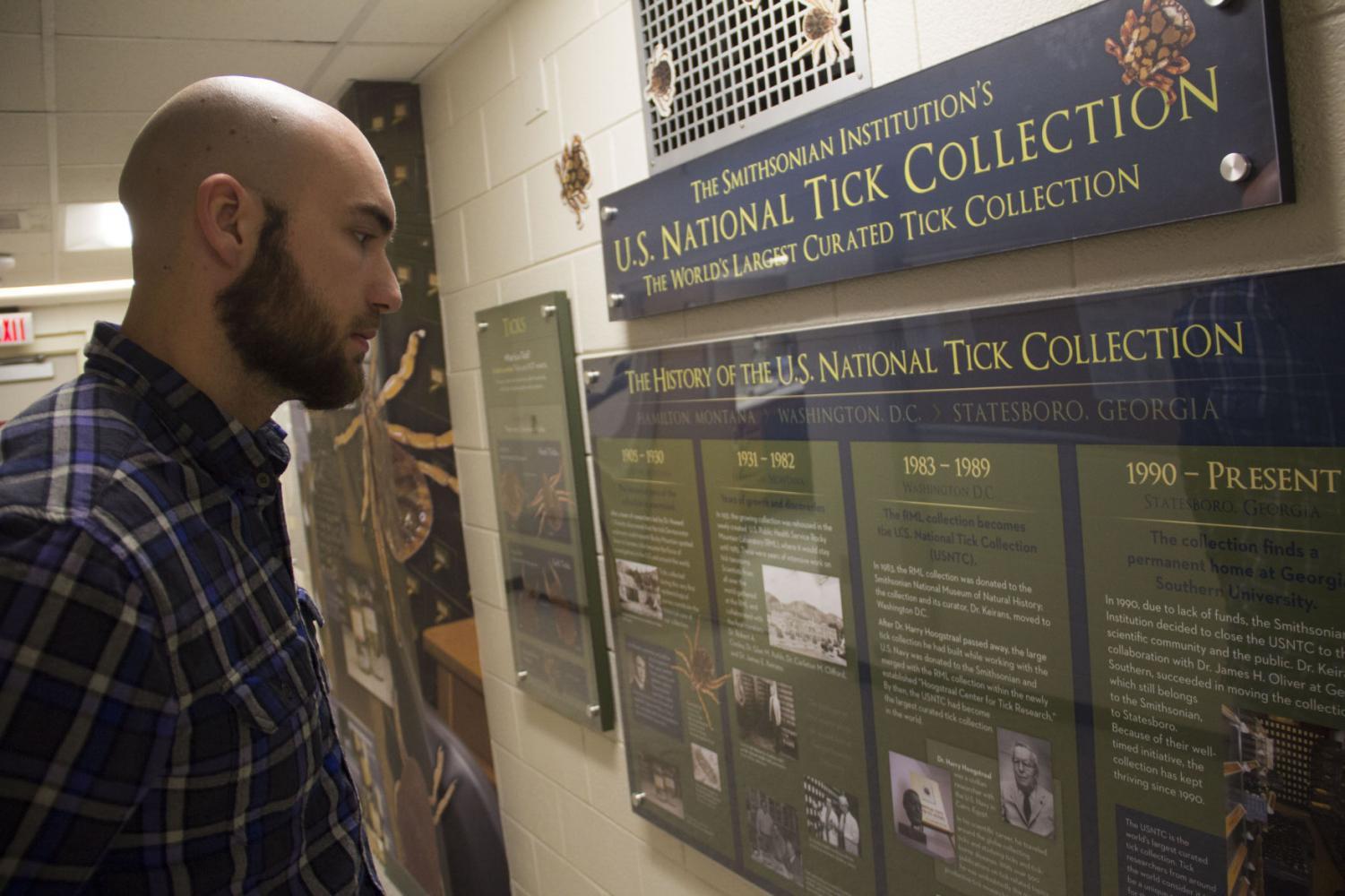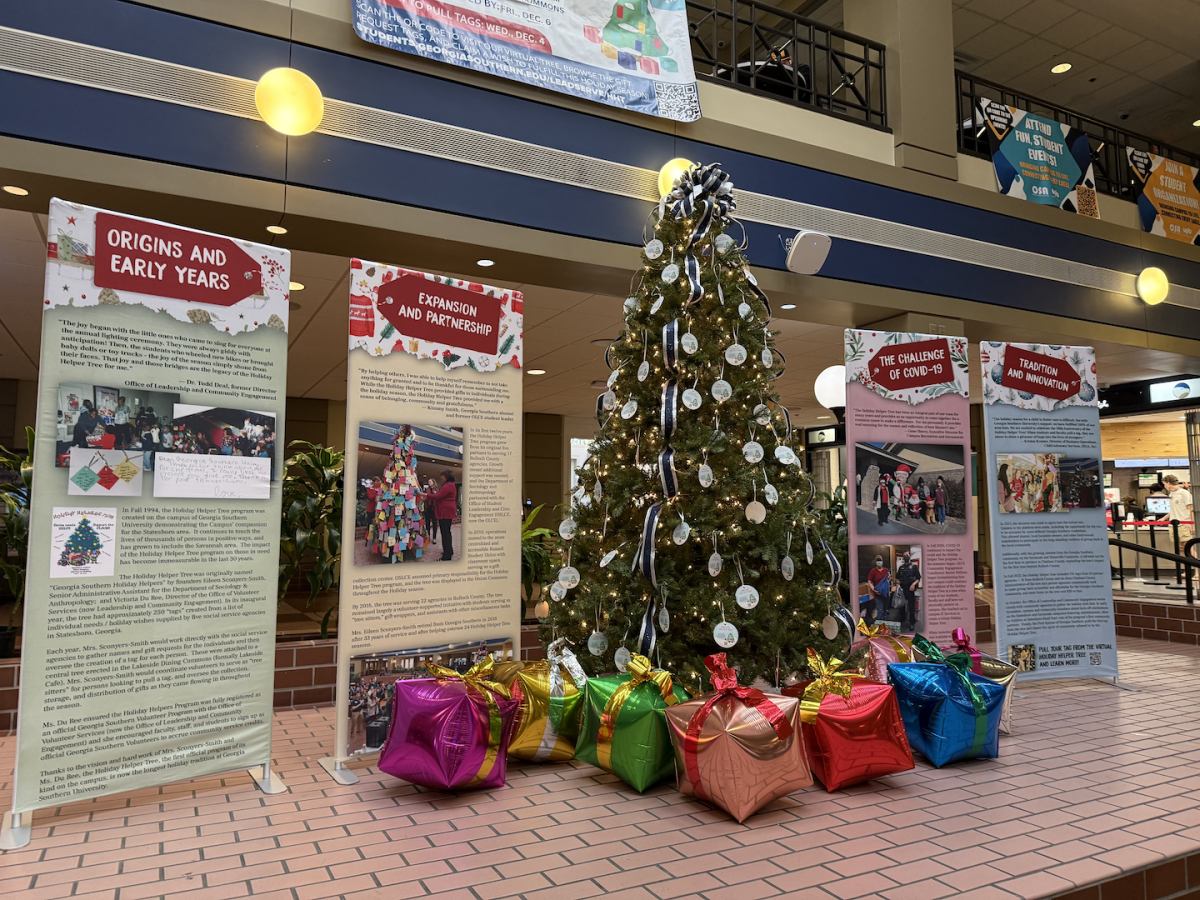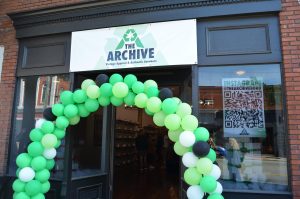The love for science: A GS student whose job is caring for the U.S national tick collection
March 23, 2017
In the 90s, the Smithsonian Institution’s U.S. National Tick Collection was relocated to Georgia Southern University’s campus. The historic tick collection originated with the scare of the Rocky Mountain spotted fever. The deadly fever sparked the drive to collect ticks in order to better study the disease.
Now here at GS, the USNTC hires Georgia Southern students on grant to do research for the collection; one of those students is Guy Hobbs.
The task of taking care of ticks
Senior biology/chemistry double major Guy Hobbs is a GS student who works with the tick collection on a day-to-day basis. He mentioned that many people mistaken his position for a job with the Smithsonian but instead he was hired through the university where he receives a grant to help with research.
“I saw that there was a job posting in the Biological Science Building and I went on to the campus job board through folio and applied for it that way. One of the assistant curators there named Dr. Beati, I did study abroad with her sophomore year where we studied on arthropods, areas where ticks are classified at,” Hobbs said. “ And I gained some interest there…So when I saw the job listing for this I thought that it would be a cool position to have on campus.”
Hobbs’ daily tasks in the laboratory involve supplementary sorting such as counting the amount of ticks, determining the gender of the ticks and classifying the stage of life the ticks are in. Many of the ticks collected come from all over the world.
A background with science
He was hired due to his previous experience with entomology; the branch of zoology concerned with the study of insects.
“Guy was hired on a contract we have through the National Ecological Observatory Network called NEON, and so we have a contract with them to do some identification work. The reason we hired him is because he already had some entomology experience. He had been on the Swiss trip with Dr. Beati where research in this field was done,” Colleen Evans, natural history collections manager said.
With Hobbs studying both biology and chemistry, he had an ample amount of experience working in laboratories and doing research. This helped him qualify for the position.
“Usually when we hire students what we are looking for are biology students, that is partially for our benefit, because that means that they have taken some chemistry courses and had some lab experience,” Evans said. “We do not like hiring any students with no lab experience ever. We also include course work, because we need you to work with chemicals and samples. We also tend to hire students that have done previous research in labs or lab work back in highschool.”
The tick collection came to GS
The relocation from the Rocky Mountains of Montana to Statesboro, Georgia occurred once the tick collection almost lost its funding.That’s when James H. Oliver, Ph.D., original director of the USNTC, decided to fund the collection here at Georgia Southern.
Back in the 90s, the previous collection was held in the Arthropodology and Parasitology Building on Georgia Southern’s campus where James H. Oliver, Ph.D., was the director and James E. Keirans, Ph.D., was the curator. Now in 2017, the collection is located in the Math and Physics Building, Colleen Evans is the natural history collections manager, and Beati is one of the curators.
Future endeavors
Along with Hobbs working in the laboratory, he has future plans after graduation. Hobbs plans to use his many experiences in his future career as a physician.
“I’m one of the countless people who would love to go to med school and be a physician. I want to get my masters first, because I learned how fun public health, so I want to get my masters in that before I apply to medical school. My plan is to be a MD-PHD where you have a doctorate and a degree in philosophy. It’s a dual doctorate degree,” Hobbs said.
For faculty and students interested in a guided tour of the Smithsonian Institution’s USNTC, tours are held on Tuesday and Thursday from 2pm – 4pm. Public exhibit about the collection is accessible from the main hallway Monday through Friday from 7am – 11pm. Contact icps@georgiasouthern.edu for more information.
Hobbs said, “I think it’s cool that I get to see a piece of history, not the mainstream history people think of, but collection history.”







